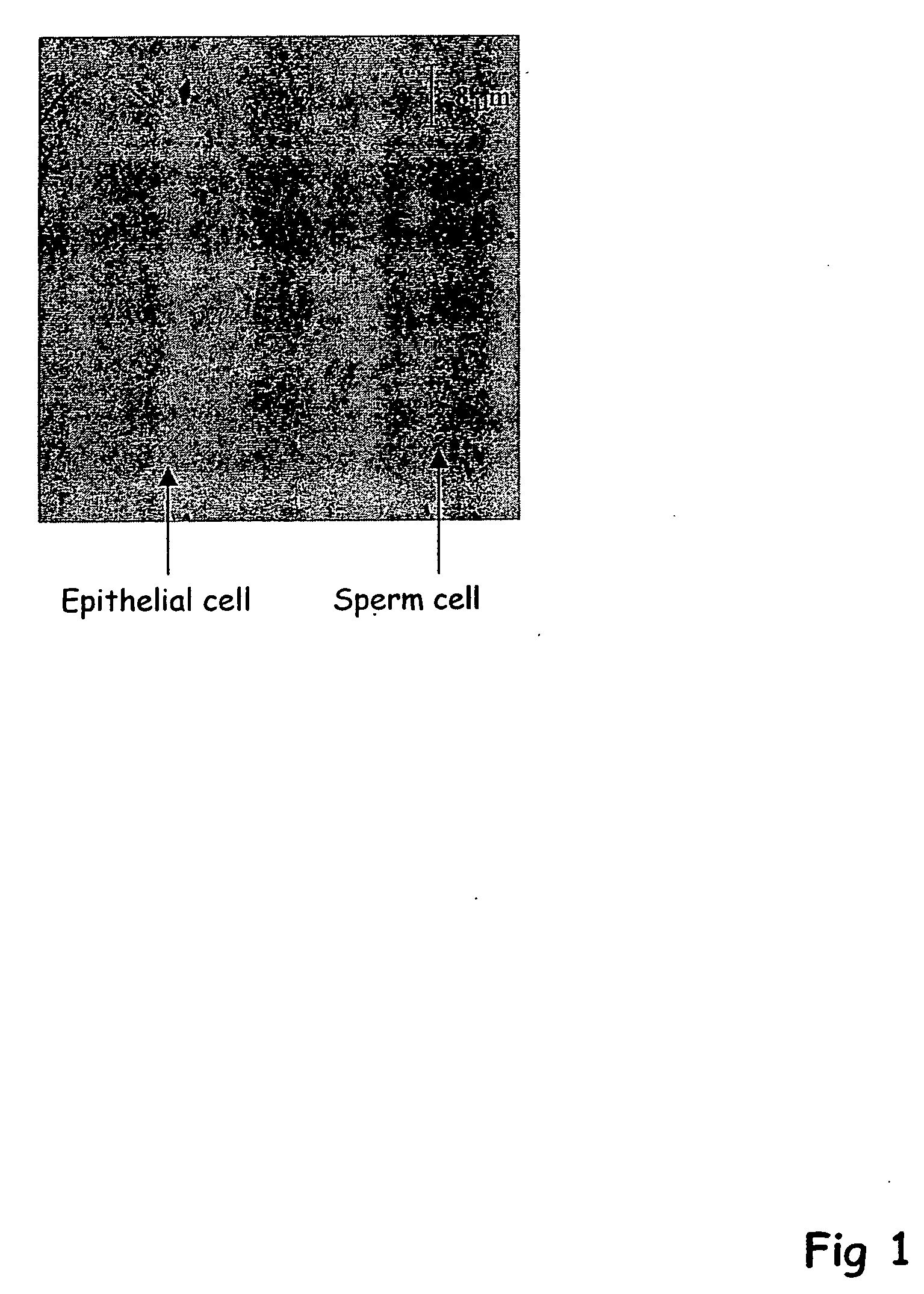Isolation of sperm cells from other biological materials using microfabricated devices and related methods thereof
a technology of microfabricated devices and sperm cells, which is applied in the direction of isotope separation, ion-exchanger regeneration, electrolysis, etc., can solve the problems of consuming and laborious procedures, ensuing preparative/analysis steps, and resulting cost-ineffectiveness, etc., to facilitate the evaluation of sperm
- Summary
- Abstract
- Description
- Claims
- Application Information
AI Technical Summary
Benefits of technology
Problems solved by technology
Method used
Image
Examples
Embodiment Construction
[0024] The present invention exploits physical and / or biological properties of sperm and other biological materials, such as epithelial cells, to effect a robust and reliable separation of the two cell types. Biological materials used herein includes, but is not limited to, other cells, such as epithelial cells, red blood cells, white blood cells, etc.; molecular species, such as nucleic acids (RNA and DNA), proteins, etc.; cell membranes; and organelles. Two separation approaches can be utilized to invoke separation of cells, with a main focus on the separation of sperm from other cells for forensic analysis where both the sperm and the other cells can be important in the forensic process. The first mode amenable to a microfabricated device is a separation driven by an electric field—this inherently involves both an electrophoretic component (mobility of cells based on size and their surface charge) and a flow component in the form of electroosmotic flow (EOF—the flow that results ...
PUM
| Property | Measurement | Unit |
|---|---|---|
| Pressure | aaaaa | aaaaa |
| Flow rate | aaaaa | aaaaa |
| Biological properties | aaaaa | aaaaa |
Abstract
Description
Claims
Application Information
 Login to View More
Login to View More - R&D
- Intellectual Property
- Life Sciences
- Materials
- Tech Scout
- Unparalleled Data Quality
- Higher Quality Content
- 60% Fewer Hallucinations
Browse by: Latest US Patents, China's latest patents, Technical Efficacy Thesaurus, Application Domain, Technology Topic, Popular Technical Reports.
© 2025 PatSnap. All rights reserved.Legal|Privacy policy|Modern Slavery Act Transparency Statement|Sitemap|About US| Contact US: help@patsnap.com



